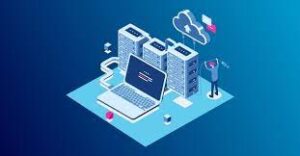Embracing new industry trends keeps your business relevant in a changing market. Those who don’t will quickly lose ground. Embracing New Industry Trends Keeps Your Business Relevant in a Changing Market.
A deep understanding of trends can lead to innovative solutions that meet both consumer and operational needs. Several technology trends are poised to transform manufacturing for the better in 2022 and beyond: automation, analytics and stakeholder complexity.

1. The Internet of Things (IoT)
IoT brings internet connectivity, data processing and analytics to physical objects, enabling them to communicate with each other and send status information. These devices can automate processes, reduce costs and improve efficiency.
They help patients and caretakers monitor their health with glucose monitors, decrease manual record-keeping with smart devices for home automation, or optimize store layouts with sensors that track foot traffic. They can also save money on utility bills and prevent environmental damage through energy monitoring and smart home systems.
IoT devices are part of a complex ecosystem that requires interoperability and standardization to ensure that they work together seamlessly. These devices are also generating vast amounts of data that must be protected to maintain privacy and security.
2. Automation
Automation has transformed many industries and will continue to do so. It can unlock higher productivity rates and help businesses achieve their goals. It also helps address societal challenges, such as health care and climate change.
However, some occupations will decline or be reshaped by automation. This includes low-skill, middle-wage jobs, such as administrative support workers and clerical roles.
This technology is also enabling companies to improve customer service and automate payroll processing. HR departments use advanced automation solutions to verify employee data, automate timesheets and verify earnings, deductions and reimbursements.
3. Robotics
Robots are a fundamental part of many industries, from manufacturing to health and safety. They perform tasks like assembling cars and other large machines, as well as performing search-and-rescue missions during natural disasters.
Robotics has become more accessible to non-experts, thanks to general technological advances in software and computing power. Hardware companies and 3rd party providers offer low-code or even no-code solutions that make programming robots much easier.
These advanced systems are also easier to integrate into comprehensive production setups, as they support convergence between IT and OT. This makes it much simpler to manage robotics across facilities.
4. Artificial Intelligence (AI)
Several end-user industries have begun integrating artificial intelligence (AI) to streamline business operations. This has encouraged new entrants into the AI marketplace with niche applicationspecific products and solutions.
Examples of AI include voice assistants and picture recognition for face unlocking on smartphones. More advanced AI software can present individuals with personalized recommendations based on their purchases and Internet searches.
Gartner defines AI as advanced analysis and logic-based techniques that interpret events, support and automate decisions and actions. This includes natural language processing, speech recognition, computer vision and robotics.
5. Big Data
Data analytics is a powerful tool that can help businesses improve operations, customer service and marketing campaigns. It can also help companies make better decisions and increase revenue.
This data is generated from many sources including transaction systems, documents, emails, smart (Internet of Things) devices, industrial equipment and social media. Emerging information technology enables this data to be stored and analyzed at enormous scales.
Different techniques are used to analyze big data. These include benchmarking, sentiment analysis and predictive models. However, the accuracy of results depends on the quality of data.
6. Cloud Computing
Cloud computing is behind many of the things we do every day: sending email, editing documents, watching movies and TV, playing games, storing pictures and videos, and more. It also powers new technology, such as AI, the Internet of Things, and remote and hybrid working.
7. Multiparty Systems (MPS)
Newly formed multiparty systems bring together stakeholders that often have no previous interaction history.
In this context, identification with one’s party may stimulate negative stereotyping towards out-groups or even spur intergroup conflict.
Embracing the power of multiparty systems can give enterprises greater resilience and adaptability, and unlock new business models. However, it is vital to understand the complexities of these relationships to make them successful needs read more hear.



















